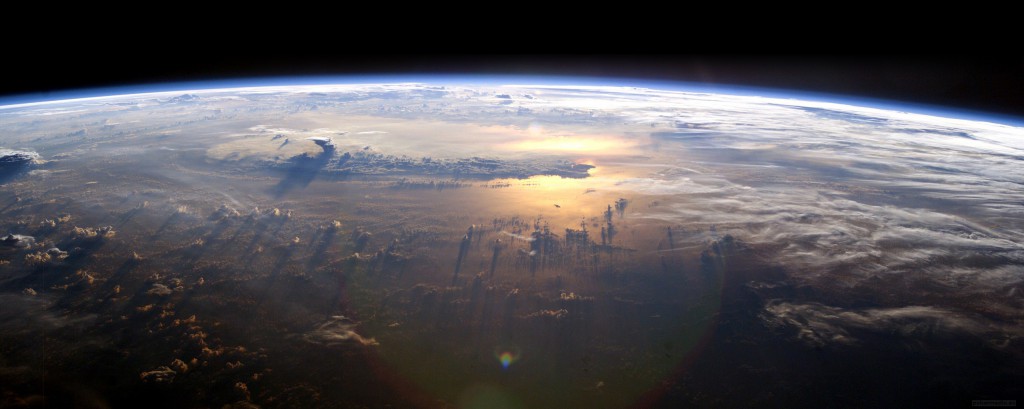This is an Eval Central archive copy, find the original at rka-learnwithus.com.
Emlyn Koster, PhD, delves into why museums should illuminate the environmental and societal impacts of climate change.

An undergraduate geologist in the UK in 1969, I was glued to the live transmission from NASA’s astronauts on the Moon with their mesmerizing panorama of the Earth. Not until recently though did I become aware that a British astronomer in 1948 predicted that the first photography of the Earth would unleash “a new idea as powerful as any in history.”
At university, I learned that the Earth’s environments are ecological responses to massive forces from above and below: climate changes that fluctuate sea-level and cause ice ages, plate tectonics that move continents and raise mountains. Although these processes are imperceptibly slow in the context of the geological nanosecond of human evolution, we are reminded of their power by sudden catastrophes such as tsunamis and developing disasters such as coastal inundation. Geologists get used to talking in timeframes of tens, hundreds and thousands of millions of years. Now rapidly, all of us ought to grasp the unwitting geological scale of our impacts on the Earth.
In 1992, 2017 and 2019 — while board chair of the Geological Association of Canada and CEO of four relevancy-minded nature and science museums — thousands of concerned scientists, including most Nobel laureates, issued warnings about escalating rates of climate change and other environmental impacts. In 2015 a joint commission of the medical journal Lancet and the Rockefeller Foundation concluded that human health hinges on flourishing natural systems. The Covid-19 pandemic has begun to raise public awareness of the impacts of climate change on human health.
In 2016 the UN’s Paris Agreement began a global focus on the perilous outcomes of human-caused 1.5-2.0°C (2.7-3.6°F) warming of the lower atmosphere. While this difference seems trivial when compared to night-and-day temperature ranges that often exceed 10°C (18°F), ice sheets and glaciers, sea level, ecosystems and food chains, and extreme weather are susceptible to minor shifts in average temperature. On Earth Day 2020, a former UN official shared a jolting view that civilization has become “estranged” from the Earth.
As with severe storms like Katrina and Sandy, it has proven invaluable for communication purposes to name the dangers we face as they unfold. Whether or not it becomes added to the Geological Time Scale, I am an advocate for the value of using the term Anthropocene as transdisciplinary shorthand for human disruption of the Earth System. This encompasses the interconnected atmosphere, hydrosphere, cryosphere, biosphere with its predominant human species, and lithosphere.
With many megacities and much key infrastructure on low-lying coasts, ‘sea level rise’ unequivocally pinpoints one of the most severe, and unsustainable, outcomes of ‘climate change.’ An article in the latest issue of Anthropocene: Innovation in the Human Age states: “Like it or not, retreat from the coasts has begun … The only question left is whether it will be managed or chaotic.” As surmised in a book review about museums and climate change: “no one gets to sit this one out.” Terms such as ‘climate change’ and ‘sea level rise’ must also beckon our understanding of related crises, such as ‘climate refugees’.
The form-follows-function principle in architecture is an echo of John Cotton Dana’s opinion of a century ago that a museum should know its community’s needs and then align itself with those needs. With major gaps between wants and needs commonplace across society, visionary leadership of museums is vital. When Sesame Street’s Grover left The Everything in the Whole Wide World Museum, he exclaimed: “You know, I have seen many things in this museum … But I still have not seen everything in the whole wide world … Where did they put everything else?”. His curiosity points to a dilemma for museums that they are as accountable for what they present as much as for what they omit. I worry that much of society as well as many in the museum sector do not yet know enough to be also worried. In its year-end report for 2020, the UN Environment Program warned that, despite a brief dip because of the pandemic, the world is heading for a temperature rise of 3.2°C (5.8°F) this century.
Emlyn Koster, PhD ([email protected]) is a geologist, museologist and humanist with UK, Canadian and US citizenships. He was the CEO at the Royal Tyrrell Museum of Paleontology, Ontario Science Centre, Liberty Science Center and the North Carolina Museum of Natural Sciences. With recognition including the University of Ottawa’s 2019 Alumni Award of Excellence, he is an adjunct professor in Marine, Earth and Atmospheric Sciences at North Carolina State University.
The post Museums and Climate Change: A Form-follows-Function Perspective appeared first on RK&A.